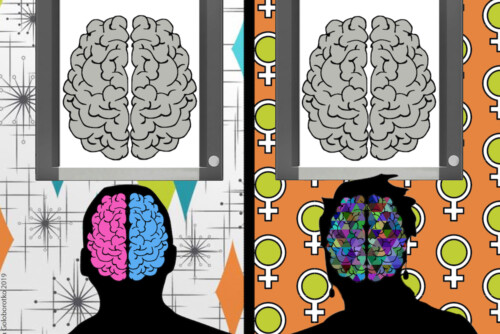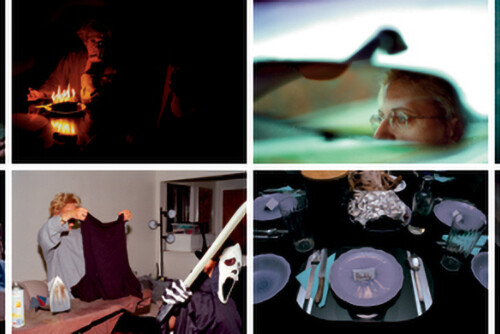“What makes this conference interesting?” I was asked this question by our colleagues in Public Affairs when it came time to publicize the Scholar and Feminist Conference XXX. At first, I didn’t know how to answer because it seemed so obvious to me. Where to start? I could talk about the 30 year history of the conference, an achievement in and of itself; or the ways in which the conference has managed with such amazing regularity to present the topics that were most relevant and important in any given year; or the ability of the conference to bring together scholars, activists, and artists so that the discussions were extremely rich and powerful; or the important papers, books, and now webjournal that have been based on the conference. I could talk about the amazing group of participants that had been assembled to celebrate this thirtieth anniversary: from established figures like novelist Dorothy Allison, Alison Bernstein, vice president of the Ford Foundation and longtime activist Faye Wattleton, to young stars like performance poet Staceyann Chin, McArthur fellow Lateefah Simon, and activist Siobhan Brooks to feminists working internationally like Kum Kum Sangari and Heisoo Shin. Or I could talk about the even longer, even more impressive list of feminists who had participated in the conference over its 30 year history: Bella Abzug, Barbara Ehrenreich, Donna Haraway, Maria Hinajosa, bell hooks, June Jordan and Adrienne Torf, Winona LaDuke, Audre Lorde, Jewell Jackson McCabe, Eleanor Holmes Norton, Grace Paley, Anna Quindlen, Bernice Johnson Reagon, Anna Deavere Smith, Barbara Smith, Ellen Willis, and Monique Wittig. Didn’t conferences that contribute so importantly to our understanding of important issues and movements make the Scholar and Feminist interesting?
This response on my part brought a clarification from my colleagues: Yes, all of these things would make the conference interesting to feminists, to scholars, to Barnard students, faculty, staff and alumnae who had helped to make the conference possible; but what would make the Scholar and Feminist interesting to the press? The press, after all, thought that feminism was dead. Feminism had been declared dead by Time Magazine in 1998 (when the conference was in its 24th year). Most recently, the cover of the October 30, 2005 New York Times Magazine asked “Are Modern Mores Killing Off What’s Left of Feminism?” in reference to an article by Maureen Dowd on young women’s supposed lack of interest in feminism. Apparently, the rumors of feminism’s death were greatly exaggerated, but now feminism really is supposed to be on its last legs.
On Saturday, April 9, 2005 feminism hardly seemed on the verge of (yet another) death, as we celebrated the 30th anniversary the Scholar and Feminist conference with some 400 very excited people, many of whom were young and apparently hadn’t heard either that feminism had died or that they were so uninterested as to be responsible for its imminent expiration. Thus, I can report without qualification that in April 2005 feminism was quite vibrant and alive, a movement with a global focus, one that is taking on new issues like the economics of globalization, while maintaining a razor sharp focus on women’s lives and how to make them sustainable. This movement offers new takes on old issues like the politics of sexuality, while advancing the feminist struggles for reproductive rights and freedoms. Long standing institutions, like the conference itself or the National Organization for Women (represented at the conference by Terry O’Neill), continue to do their work, while new younger activists like Lateefah Simon, Jennifer Kern, Siobhan Brooks, and Staceyann Chin are forming new organizations, like the Center for Young Women’s Development, or taking on new issues, like disability rights, or changing the focus of old issues like sexuality, or adopting new media, like spoken word and performance. All of this lively activity was visible at the conference, both in its long term sustainability – as Leslie Calman said in her introduction of Alison Bernstein, Alison has been doing this work “since the dawn of time” – and in its various new incarnations. So, if feminism is dead who are all of these people whose work was so alive?
Looking at all of this activity and excitement has made me realize that if members of the mainstream press can’t see this, then they must be looking for something else. Perhaps the press is looking for feminism, for marches and rallies, street demonstrations and bra burnings. They are looking for Gloria Steinem and Betty Friedan. They are looking for opposition to the Miss America pageant (which is dying its own slow death from inattention). They are looking for the Equal Rights Amendment, which did, in fact die an unfortunate death. But, is the only form in which feminism could be resuscitated the form in which it existed before we lost the ERA?
It has occurred to me that this feminism, the one locked in amber since the 1970s, might in fact be dead. It occurs to me that, in fact, this feminism may never really have been alive. It may have had its most vibrant existence in the imagination of the press, and hence in the imagination of those who know feminism only from the press. As Amy Richards and Jennifer Baumgardner pointed out when at the Center to discuss their book Manifesta: Young Women, Feminism, and the Future, Gloria Steinem, herself, tried to resist the press focus on her as the embodiment (the thin, white, and beautiful embodiment) of feminism. She knew in the 1970s that this focus hid as much as it revealed. And what it hid was a movement that was much more diverse, that addressed a much broader range of issues, and that had a wider range of tactics than has been generally acknowledged.
How we tell the history of feminism makes a difference for how we might respond to the charge that feminism is dead. It is not enough to insist that feminism is alive – pointing out a factual error cannot intervene in an ideology. Moreover, simply to assert the vitality of feminism doesn’t change the picture of what feminism was, what feminism is or what feminism can be. If feminism means only those things imagined for it by the mainstream press – access to upper class jobs for a few already privileged women and abortion rights – then perhaps our accomplishments are simultaneously passé and in grave danger. But, if feminism means something more than that, if it means fighting the various economic injustices that women face in gender and race segregated labor markets, then feminism is very much alive in the fight for equal pay and in the fight against poverty and growing income inequality, as well as in the fight against sweatshop labor conditions around the world. Similarly, if we look at the breadth of women’s reproductive freedoms we can see the lifeblood of feminism not just in the battle to save abortion, which brought over a million people to Washington, D.C. in April 2004, but also in the myriad struggles for women’s right to freedom from sexual violence, for control over their reproductive lives, and for an AIDS policy that responds to the need to prevent and treat the disease rather than to narrowly defined sexual ideologies.



